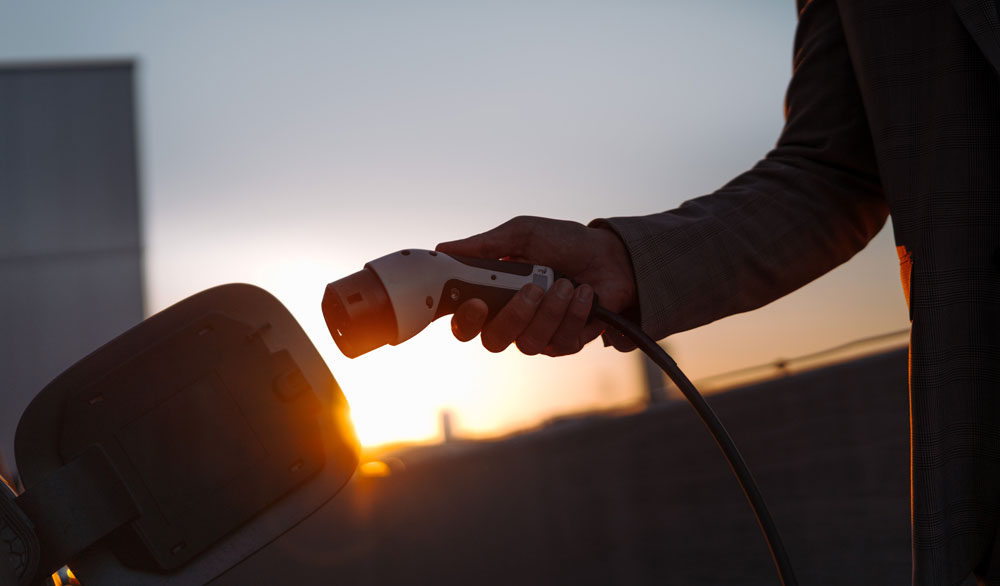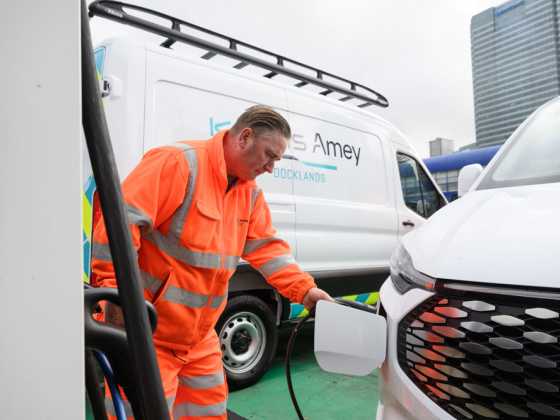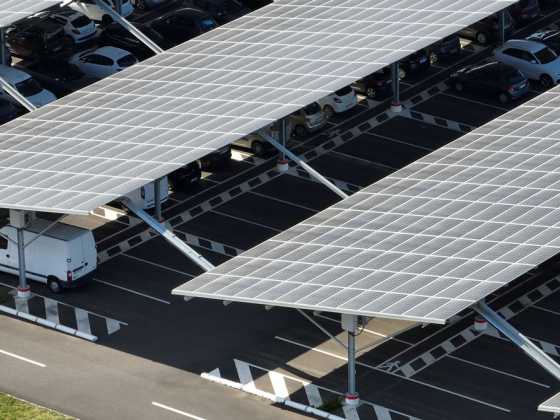Taking the leap into electric vehicles

Companies are facing challenges and uncertainty unseen in generations. But that should not hinder them from making the switch to electric vehicles. James Court, CEO of EVA England, explains why
For fleets looking at the future, it is a less clear picture than even that of last year.
Politically and economically, there has rarely been a more complex and uncertain future, at least in the short to medium term.
Confidence is a much-used word when businesses talk to government. Consumer confidence, investor confidence, policy confidence, all things over the years I have heard CEOs often tell ministers.
There were times I thought this was a lazy request; businesses should be geared up to be relatively nimble, as well as see opportunities in shifting markets and policy landscapes.
There are two obvious categories where this is not applicable, one is government reversing long term targets that business had been forced to shift to, the other is a very sudden pulling of the rug from under them.
Changes of government are therefore to be slightly feared, all too often the devil you know is better than the one you don’t.
The UK has now seen four different PMs in the past six years. It is then not surprising that investment has slowed since 2016, yet in that time investment in renewables and electric vehicles has soared. This is the value of long-term goals and continuity of direction even with changes of government.
Looking back
We are at a familiar stage of a having a new government again. With Theresa May, we very early on saw a renewal of the commitment to the Climate Change Act, followed by a world leading announcement on the banning of internal combustion engines (ICE). This set the long-term direction of government policy, and a clear signal for both car manufacturers and fleets.
With Boris Johnson, again we got a clear early signal, with the UK being chosen to host COP26. This was backed up with the bringing forward of the ICE phase-out, a strengthening of the UK position which underlined the policy direction for industry.
Politically, we have yet to see an early commitment from Truss, although there are many, many other challenges she is facing, EVs may not have been at the top of her to-do pile. Some might argue that during a fuel crisis perhaps it should have been, and the calls for action in this area will grow louder with every week that goes by.
The most obvious area where we should see a clear recommitment is the upcoming decision on the Zero-Emission Vehicle (ZEV) Mandate, something that has been widely consulted on and the final decision was due to take place at roughly this point, if it was not for the change in leadership.
The ZEV Mandate is the key policy mechanism that will help deliver the ICE phase-out by 2035. A strong signal for this policy would include ambitious yearly increases in the percentage of ZEVs sold, and a high cash-out price for underperformance by OEMS. This would demonstrate continuity and a government commitment that industry, including fleets, could take reassurance from.
If the policy come out with nothing more than ‘business as usual’ targets, if the cash-out price is weak and serves as no disincentive, or if, something that seemed inconceivable a few months ago, there is a rolling back in the dates for the phase-out, this would represent a move away from recent policy and would be a huge shock to those who have made the switch following government urging.
This would be a classic, and well merited, complaint to ministers about business confidence and one that strikes to the long-term planning of a company.
An unstable backdrop
Economically, the picture is borderline terrifying, with electric vehicles not being exempt. Raising interest rates adding costs to leasing, petrol prices fluctuating, and electricity costs rocketing are all going to have an impact.
In the short-term, businesses have some solace with a temporary fix on energy wholesale prices; this is a source of relief with those
with existing fleets, but issues remain.
For those drivers who rely on public charging, we are yet to see or hear any concrete support. A reduction in VAT is ever more important, and a serious issue that strikes to the heart of any fairness agenda and the much-maligned levelling-up ambitions. But further to that, we must legislate to separate out business energy costs with those of charging costs.
Charge Point Operators (CPOs) are providing a front-line service akin to fuel stations. The political heat felt by politicians from the forecourts is well acknowledged, going forward CPOs are going to be increasingly in the same position and the government needs to have that firmly in mind.
For fleets, the temporary blip in energy prices must be offset by lower costs comparatively with ICE vehicles that still exist.
Even in normal times, the total cost of ownership is a difficult thing, and a foreign concept to many used to traditional finance models with ICE vehicles. With inflated electricity costs this may scare away many people making the decision. However, there are ways to control this, and to give longer price certainty. On-site renewables, or PPAs with external renewable schemes can give a stable price for electricity going forward.
If you are looking forward, it seems likely that instability in both oil and electricity may be the new norm. Away from geopolitics, petrol prices are entering into an endgame scenario, with most of the leading economies pledging to end sales of ICE vehicles in the next two decades. The investment decisions by extractors and upstream providers will already be impacted by this and will lead to unpredictable prices going forward.
Prices coming down
Technologically, the price points for EVs are coming down, and although covid may have slowed down the expected ‘tipping point’ for price parity
for new EVs vs ICE, we are still going to see the price of EV models drop below ICE this decade, and that is after you factor in the lower running
costs and other incentives that are currently available.
In the short term, it is looking like fleets are likely to hold on to what they have a bit longer. This is going to have impacts on second hand markets, for both ICE and EVs. Yet the long-term direction is clear, no matter what a UK government may do in the 18 months until the next general election, the global direction is clear. Companies that make the shift will be further along in their progress and business models than those who cling on to past technologies.






